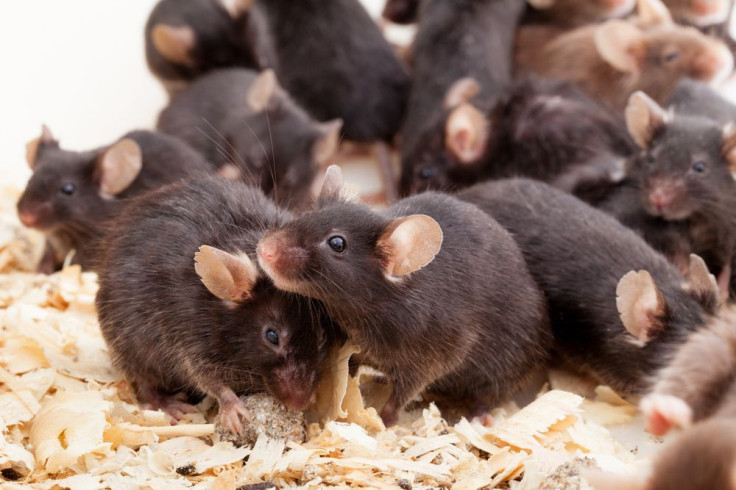Bringing The Human Brain To Mice: Glial Cells Support Neurons To Make Animals Smarter

As if our egos weren’t already large enough, scientists have managed to introduce human brain cells into the brains of mice, effectively making them smarter than their average mouse peers. A recent study from the University of Rochester Medical Center reports the mice’s newfound glial cells help support the neurons that produce thought.
Replacing half a mouse’s brain with human glial cells, the cells that support neurons with a protective substance called myelin, doesn’t mean the mice are any more human, per se. Rather, researchers hope the advance will build on prior work that lets them understand more about diseases of the brain. Though cell cultures offer a certain degree of insight, the chance to see disease play out in more sophisticated models still reigns supreme.
“We could see the human cells taking over the whole space,” co-author Dr. Steven Goldman, professor of neurology at URMC, told New Scientist. “It seemed like the mouse counterparts were fleeing to the margins.”
Goldman and his team of colleagues initially incorporated 300,000 premature glial cells from donated human fetuses into the brains of ordinary lab mice. Within a year, the inaugural batch had multiplied to some 12 million cells, totally replacing the mice’s former cells. The replacement yielded massive changes to the animals’ cognitive output. With 100 times as many tendrils between synapses — the bridges between neurons — as the control mice, the humanized mice froze four times longer in response to a conditioned sound. Greater cognition made for stronger memory.
“These were whopping effects," Goldman said. “We can say they were statistically and significantly smarter than control mice.”
Making a comparison of intelligence isn’t as cut and dry as a batch of cells may lead on. Intelligence is comprised of many factors, including reasoning ability, creativity, and pattern recognition — not just the strength of one’s memory — so there are natural limits to the claim that the mice are smarter. But from a neurological perspective, many of the moving parts scientists conflate with intelligence did get beefed up.
Human astrocytes, for example, a type of glial cell, are 10 to 20 times larger than mouse glial cells. They can communicate signals far more quickly, Goldman says. “It's like ramping up the power of your computer.”
This isn’t the first study to make mice smarter with a little outside help. In 2013, Goldman first showed mature glial cells generate the effect. But that finding was limited in that the glial cells had already matured, so the team couldn’t assess whether they interacted at all with the existing cells. In the new study, the research team relied on progenitor cells, which can divide and multiply until they run out of space. In parallel research, Goldman showed immature glial cells can transform into oligodendrocytes, which help restore the brain’s supply of myelin.
The people most at-risk for myelin loss are those suffering from multiple sclerosis and other degenerative diseases. Goldman hopes to start a trial in 12 to 15 months that investigates progenitor glial cells’ ability to restore the myelin sheaths. He's awaiting formal permission.
In the meantime, he and his colleagues are moving the experiments toward more advanced models. He has set his sights on rats, though he doubts they’ll move much further. Monkeys and chimpanzees are probably a no-go, as toying with higher-order functions begins to introduce ethical concerns. Wolfgang Enard, of Ludwig-Maximilians University Munich in Germany, has expressed some doubts after having performed similar research.
“If you make animals more human-like,” he told New Scientist, “where do you stop?”
Source: Windrem M, Schanz S, Morrow C, et al. A Competitive Advantage by Neonatally Engrafted Human Glial Progenitors Yields Mice Whose Brains Are Chimeric for Human Glia. The Journal of Neuroscience. 2014.



























